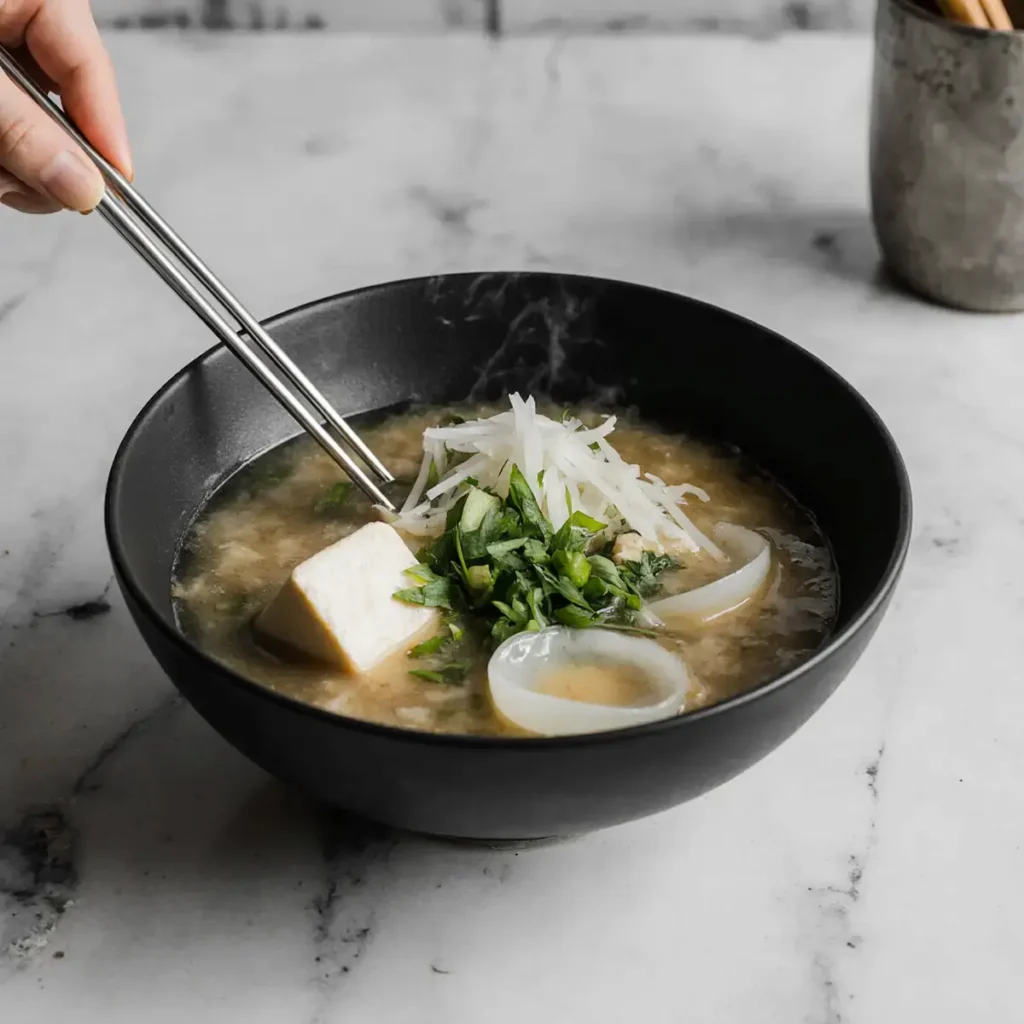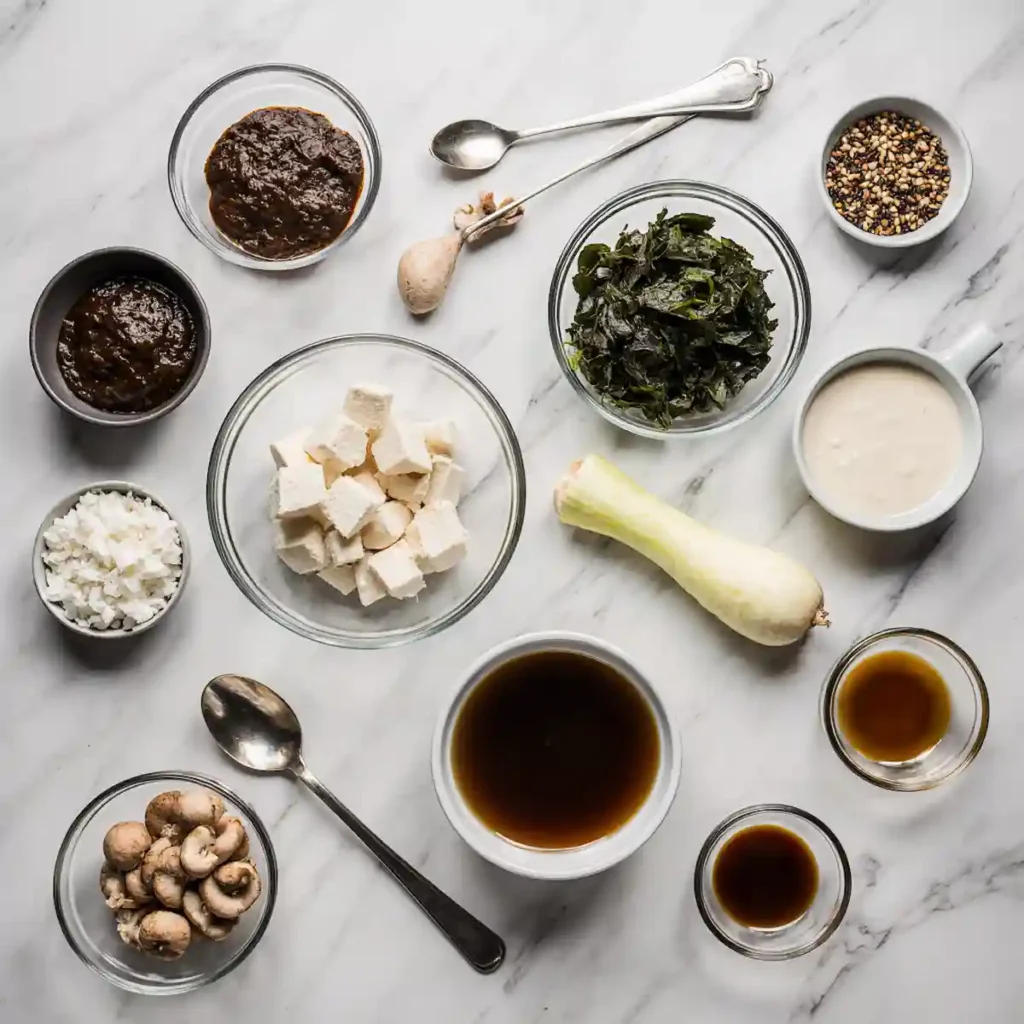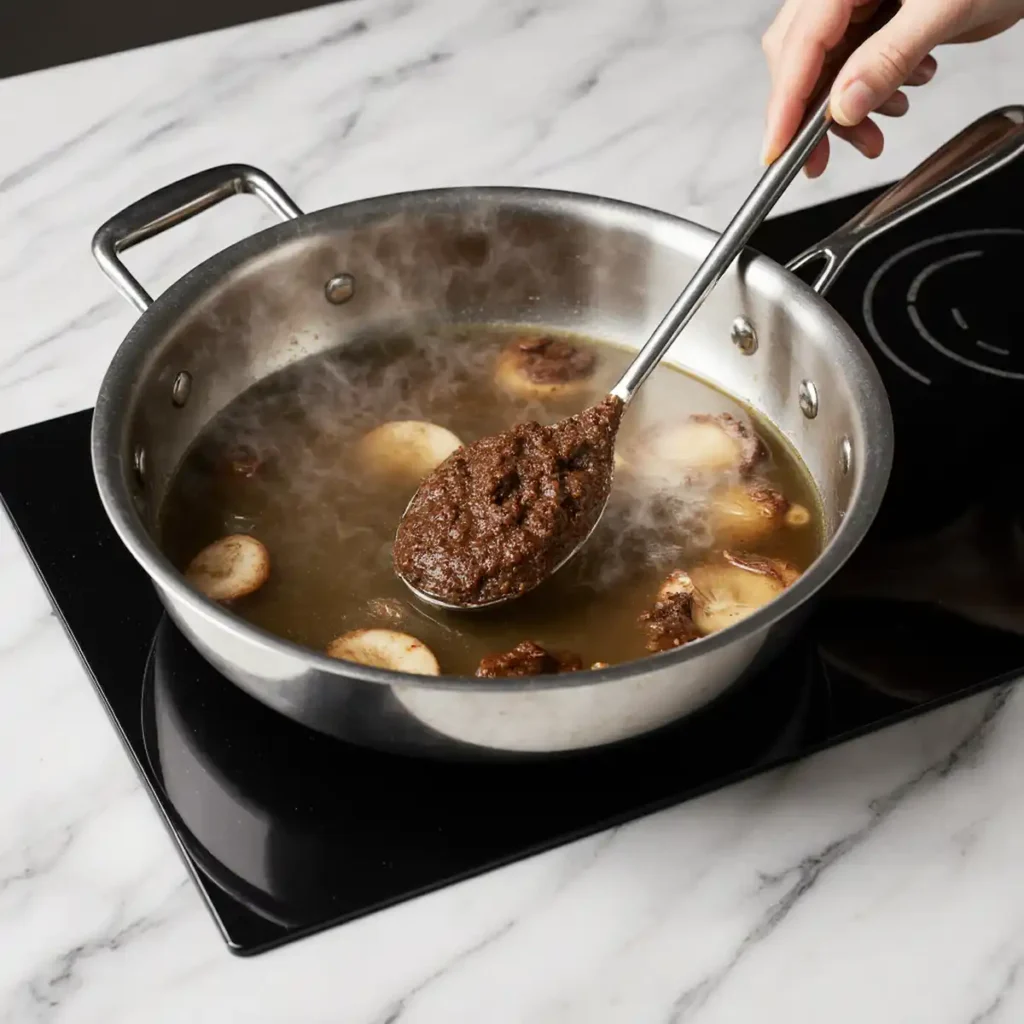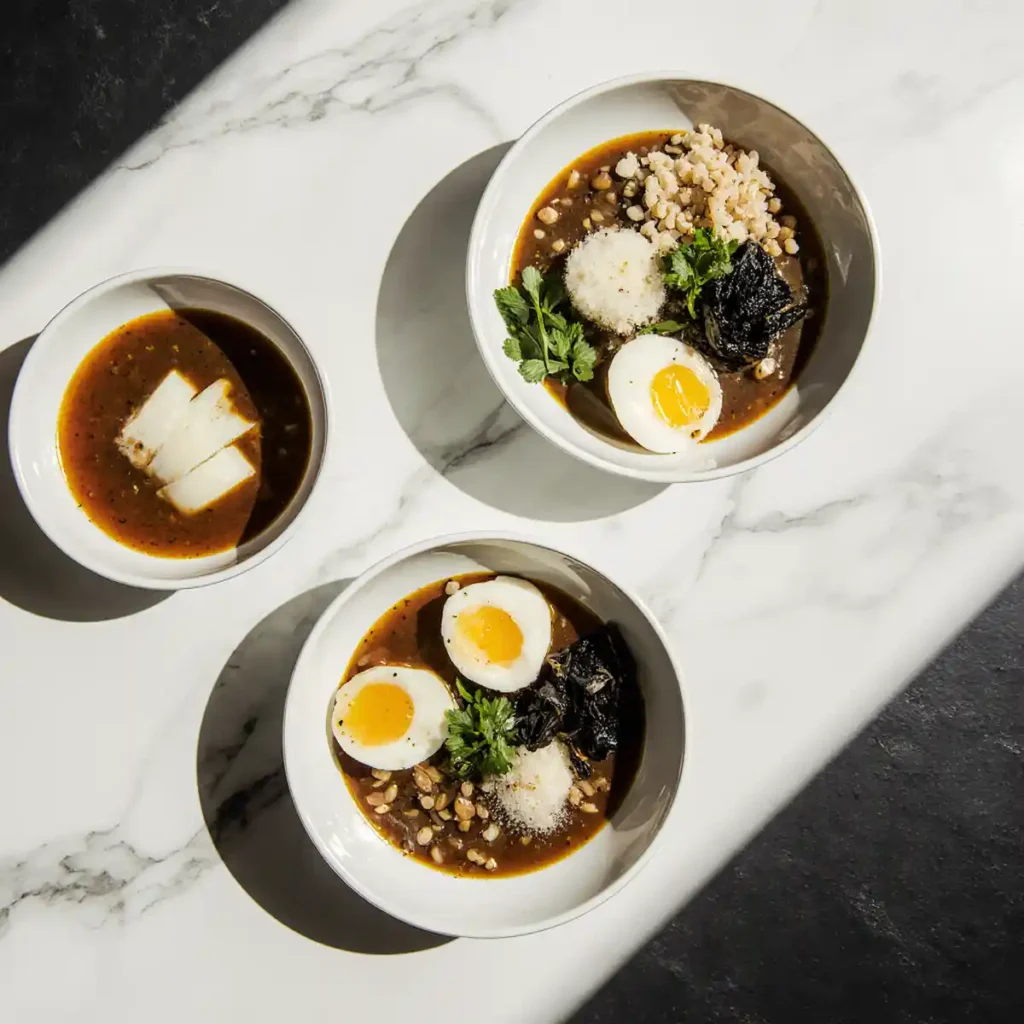
Introduction
The phrase “Homemade Japanese Mounjaro Recipe” has been stirring up curiosity not only among fans of Japanese cuisine but also among those pursuing more natural, whole-food lifestyles. Though the term “Mounjaro” might ring medical bells due to its use in pharmaceutical marketing, its culinary counterpart holds deep roots in traditional Japanese cooking. This homemade version is a savory, fermented, umami-packed bowl built on age-old wisdom, rich ingredients, and a commitment to natural processes.
If you’re craving something hearty, clean, and steeped in cultural richness, learning how to make an authentic Japanese Mounjaro dish at home is more than a recipe—it’s a return to real food. In this guide, we’ll explore the origins of the dish, the essential ingredients that build its character, step-by-step cooking instructions, and even fusion variations that nod to modern dietary trends.
Looking for inspiration? Try Natural Mounjaro-Inspired Recipes for Weight Loss to explore related healthy dishes rooted in tradition.
Introduction to Japanese Mounjaro Recipe Homemade
What is Japanese Mounjaro in Culinary Culture?
Despite its name being tied today to metabolic health in the pharmaceutical world, in Japan, Mounjaro refers to a rustic, nutrient-rich bowl featuring fermented ingredients, warm broths, and plant-based proteins. The word may not appear in every Japanese cookbook, but its composition—miso broth, tofu, kombu, daikon—is embedded in countless household traditions.
The Homemade Japanese Mounjaro Recipe is more than a meal; it’s comfort food with depth. It’s meant to be warming, digestible, and full of gut-friendly ferments that have long been used in Japanese wellness practices. Think of it as the culinary version of natural healing—an edible probiotic ritual.
This dish captures a balance that few modern meals do: complex flavors from simple ingredients and nourishment that’s felt long after the last bite. And the best part? Every aspect can be made from scratch, right in your kitchen.
How the Homemade Trend Gained Global Attention
In recent years, this humble Japanese bowl has earned global appeal—mostly because people are fed up with processed “quick meals” and health claims that don’t deliver. They’re turning back to dishes like the Homemade Japanese Mounjaro Recipe that offer both authenticity and nutritional value.
Searches for fermented food recipes have skyrocketed. Influencers and wellness bloggers are showcasing Mounjaro-inspired meals as a go-to for plant-based, natural living. Discover great ideas like this Japanese Mounjaro Recipe to see how traditional broths are making a comeback in healthy eating circles.
Globally, the push for natural, chemical-free food sources has paved the way for recipes rooted in fermentation and ancestral preparation. Japanese Mounjaro hits every mark: no preservatives, no shortcuts, no factory-made bases—just clean ingredients elevated by time and technique.
Don’t miss our Green Brazilian Mounjaro Detox Drink Recipe to explore another side of the Mounjaro trend and see how it’s evolving around the world.
Core Ingredients of a Japanese Mounjaro Recipe Homemade

Traditional Japanese Mounjaro Ingredients List
Every flavorful bowl of Homemade Japanese Mounjaro Recipe starts with clean, traditional ingredients that deliver deep umami and gut-healing properties. These staples are time-tested and hand-picked—not mass-produced or preserved with additives. Here’s what you’ll need to build an authentic base:
- Fermented Miso Paste (preferably unpasteurized): The cornerstone of the broth, miso delivers a salty, fermented punch while promoting gut health.
- Dried Kombu (seaweed): Soaked to extract minerals and depth in flavor. It’s key for the broth’s complexity.
- Dried Shiitake Mushrooms: Earthy, chewy, and rich in umami; they provide the signature depth.
- Tofu: Soft tofu is ideal—it absorbs flavor without falling apart.
- Fresh Daikon Radish: Offers a subtle peppery contrast and aids digestion.
- Noodles or Sticky Rice: A hearty base that complements the soup’s broth and proteins.
- Naturally Brewed Soy Sauce or Tamari: Adds a dark, savory richness without artificial preservatives.
- Sesame Oil: For light sautéing and to enhance aroma.
- Optional Garnishes: Green onions, pickled ginger, toasted sesame seeds, and shredded nori bring freshness and crunch.
These ingredients make up the soul of the dish. And yes, you can find them at most Asian grocery stores or organic markets. When sourced properly, each one enhances your Homemade Japanese Mounjaro Recipe with both authenticity and nutritional power.
The Role of Umami and Fermentation in Flavor Building
Umami isn’t just a flavor—it’s an experience. It’s what makes a bite of soup feel rich and warming. And for this dish, umami is delivered by two forces: fermentation and synergy.
Fermentation introduces probiotics and intensifies flavor through time. Miso and aged soy sauces undergo natural processes that unlock savory amino acids. When added gently to your dish (never boiled), they retain both flavor and health benefits.
Synergy comes from layering. Kombu plus shiitake mushrooms form a flavor-rich dashi. Tofu absorbs the miso. Daikon provides a crisp bite that contrasts with silky noodles. Together, they build a mouthfeel that’s grounded and complex.
Avoid flavoring shortcuts like soup cubes or synthetic powders. They might seem convenient, but they rob your dish of its heritage. Real flavor in the Homemade Japanese Mounjaro Recipe isn’t about speed—it’s about building depth, slowly and intentionally.
Looking for inspiration? Try this Pink Salt Trick Recipe to explore how other traditional methods enhance flavor naturally.
Step-by-Step Homemade Japanese Mounjaro Cooking Process

Preparing the Broth Base the Authentic Way
The heart of any Homemade Japanese Mounjaro Recipe lies in its broth. You’re not tossing everything into a pot and turning up the heat. You’re layering depth—carefully, intentionally, and with patience.
Here’s how to do it right:
- Soak the Dried Ingredients Overnight
Place dried kombu and shiitake mushrooms in a bowl of filtered water. Let them sit overnight (8–12 hours). This releases their natural glutamates, which build that coveted umami flavor. - Gently Heat the Broth
Pour the soaking water and rehydrated ingredients into a pot. Turn the heat to low. Do not boil. As soon as tiny bubbles appear, remove the kombu. Let the mushrooms simmer for another 10–15 minutes. - Add Miso Without Killing the Probiotics
Scoop a spoonful of unpasteurized miso paste into a ladle. Fill the ladle with warm broth and stir until dissolved. Gently add it back into the pot. Never stir miso into boiling water—it’ll destroy the living enzymes. - Season Naturally
Add a splash of naturally brewed soy sauce or tamari. You can also add a few drops of toasted sesame oil to enhance the aroma.
Now you’ve got a rich, probiotic-loaded broth—warm, not boiling—ready to nourish.
Cooking and Assembling the Mounjaro Bowl
Now that your broth is ready, it’s time to complete the bowl.
- Prepare Your Base
Cook sticky rice or whole wheat Japanese noodles according to package instructions. For authenticity, avoid instant varieties. - Add the Tofu
Gently dice soft tofu and place it into the hot broth. Let it simmer lightly for 3–5 minutes. It should absorb flavor, not fall apart. - Layer the Garnishes
- Grated daikon radish for brightness
- Thinly sliced green onions for sharpness
- Toasted sesame seeds for nuttiness
- Shredded nori strips for extra umami
- Optional Add-ins
If you want a touch more complexity, include a spoonful of sesame paste, a few chili flakes, or a dash of yuzu juice. These add personality without changing the dish’s foundation.
Check out Healthy Air Fryer Zucchini Fries as a fun, crispy side that complements your Mounjaro beautifully.
This entire process takes less than an hour, but the results taste like something you simmered all day. That’s the beauty of a well-built Homemade Japanese Mounjaro Recipe—flavor through patience, not shortcuts.
Natural Alternatives & Homemade Substitutes
How to Make Natural Mounjaro at Home Without Synthetic Ingredients
Many newcomers ask, “How do you make Japanese Mounjaro naturally at home?” The answer starts with ditching commercial flavor enhancers and focusing on clean, whole-food components. A Homemade Japanese Mounjaro Recipe should never rely on powders or MSG-laden sauces. Here’s how to keep it 100% natural.
- Use Organic, Unpasteurized Miso
This is the key to probiotic power. Always choose miso that hasn’t been heat-treated so its beneficial bacteria stay intact. - Select Filtered Water
Avoid tap water that might contain chlorine or minerals that interfere with fermentation and soaking. Filtered water enhances taste and keeps ingredients pure. - Rely on Slow Soaking and Simmering
You can’t rush good broth. Let your kombu and mushrooms soak at room temperature overnight to extract minerals and umami. - Avoid Store-Bought Broth
Even “natural” labeled broth often contains added yeast extracts or preservatives. Your homemade broth from kombu and shiitake tastes better and supports digestion. - Use Whole Toppings
Crisp grated daikon, tangy homemade pickles, and smooth organic tofu deliver texture and richness—naturally, with no added preservatives. No freeze-dried toppings or pre-sliced packets.
By making your Homemade Japanese Mounjaro Recipe this way, you’re not just cooking—you’re committing to food that heals and fuels with intention.
Homemade Swaps for Commercial Mounjaro Products
Mass-market Mounjaro-style meals often come packed with hidden sodium, MSG, artificial colors, and synthetic oils. But the good news? You can recreate the same taste at home using natural swaps. Here’s a simple breakdown:
| Commercial Product | Homemade Substitute |
|---|---|
| Instant miso soup powder | Organic aged miso + warm filtered water |
| Seasoned soy sauce with sugar | Naturally brewed tamari or low-sodium soy |
| MSG-based broth cubes | Kombu and shiitake broth with a dash of sesame oil |
| Freeze-dried toppings | Fresh daikon, scallions, toasted sesame seeds |
| Artificial chili sauces | Fresh grated ginger or chili-infused sesame oil |
These swaps don’t just cut out chemicals—they elevate flavor naturally. If you’re committed to a truly Homemade Japanese Mounjaro Recipe, each of these choices matters. They reflect your values in every spoonful.
Don’t miss our natural twist on detoxing: Apple Cider Vinegar and Turmeric Drink, a powerful, fermented wellness tonic that aligns beautifully with your clean kitchen goals.
Secrets of Fermentation in Japanese Mounjaro

Why Fermentation Is Central to Traditional Mounjaro
At the core of every authentic Homemade Japanese Mounjaro Recipe is fermentation. This ancient culinary practice doesn’t just preserve food—it transforms it. Fermentation enriches the dish with probiotics, adds depth to flavor, and supports digestive wellness.
The key fermented ingredients are:
- Aged Soy Sauce (or Tamari): True Japanese soy sauce is fermented in cedar barrels, sometimes up to 12 months. This slow aging process builds richness, salt balance, and a slightly sweet aftertaste.
- Miso Paste: Made from soybeans, salt, and koji, this umami-rich condiment is slowly fermented over months—or even years—for deep, complex flavor. The result? A living food that delivers savory depth and beneficial bacteria to your gut.
- Fermented Toppings: Add-ons like pickled daikon, homemade kimchi, or Japanese tsukemono (pickled vegetables) contribute crunch and acidity—plus they enhance the meal’s digestive power.
Unlike store-bought soups that rely on MSG or hydrolyzed proteins, real fermentation in a Homemade Japanese Mounjaro Recipe delivers complexity and live cultures naturally.
Looking for more probiotic-packed inspiration? Check out this Japanese Mounjaro Recipe Detox Drink trusted across Japan for its natural healing benefits.
Tips to Preserve Probiotics, Texture, and Aroma
The way you handle your fermented ingredients can make or break the dish. Here are key tips to preserve their power in your Homemade Japanese Mounjaro Recipe:
- Don’t Boil the Miso
Always add miso at the end of cooking. Stir it gently into warm (not hot) broth to preserve its probiotics and prevent bitterness. - Soak, Don’t Rush
Kombu and shiitake mushrooms need time to release their essence. A fast boil ruins their oils and soft textures. Let them steep overnight or simmer slowly. - Add Garnishes Last Minute
Pickled toppings, grated daikon, and scallions should be added just before serving. This keeps their texture crisp and their flavors bright. - Use Soft Tofu
Firm tofu often overpowers the broth. Soft or silken tofu absorbs flavors more fully and contributes to the dish’s gentle consistency. - Toast Ingredients for Aroma
Lightly toast sesame seeds or nori just before garnishing. The released oils provide an aromatic boost that transforms the final bowl.
These steps may seem small, but they honor the dish’s origins. They ensure your Homemade Japanese Mounjaro Recipe tastes exactly like it would in a Tokyo home kitchen—rich, nourishing, and full of soul.
Japanese Mounjaro vs Brazilian Mounjaro
What Is the Brazilian Mounjaro and Why It’s Different
If you’ve come across “Mounjaro” in wellness communities online, chances are you’ve seen two very different versions: the traditional Japanese bowl and the trending Brazilian Mounjaro detox drink. Despite sharing a name, these two couldn’t be more different in origin, ingredients, or purpose.
The Brazilian Mounjaro is a modern health trend that emerged in fitness and weight loss circles. It’s typically a liquid detox broth made with raw or juiced ingredients, often including:
- Green cabbage
- Fresh ginger
- Lemon or lime juice
- Cayenne pepper
- Apple cider vinegar
This version is meant to cleanse, boost metabolism, and reduce bloating. But unlike the Homemade Japanese Mounjaro Recipe, the Brazilian dish contains no fermented components, no umami layering, and no solid elements like tofu or noodles.
Where Japanese Mounjaro is a balanced meal rich in tradition, the Brazilian take is a detox drink with bold flavors and a short-term focus. It’s a wellness shot—not a comforting bowl.
Still, both offer health-conscious consumers something valuable. And when understood as separate dishes, each stands on its own.
Discover more about this trend through the Green Brazilian Mounjaro Detox Drink Recipe and see how it contrasts with the original.
Fusion Ideas: How to Combine Japanese and Brazilian Flavors
Even though their foundations differ, fusion cooking gives you the freedom to blend elements from both traditions into one innovative dish. That said, the key is moderation—don’t overpower the subtlety of the Japanese base.
Here’s how to respectfully infuse Brazilian flair into your Homemade Japanese Mounjaro Recipe:
| Fusion Element | How to Use It |
|---|---|
| Fresh ginger juice | Add to broth during the simmer for a bright, spicy lift |
| Cayenne pepper | Sprinkle lightly just before serving for heat and metabolism boost |
| Lime or yuzu juice | Squeeze into the bowl for acidity and citrus aroma |
| Apple cider vinegar | Add a drop to contrast the umami of miso and mushrooms |
| Cabbage (instead of seaweed) | Blanched and added to the bowl for crunch and fiber |
Remember, the foundation of your Homemade Japanese Mounjaro Recipe should remain intact—fermented miso, kombu, tofu, and daikon. Brazilian twists should lift the flavors, not replace them.
This balanced approach lets you enjoy the boldness of Brazil without losing the calming soul of Japan. It’s culinary creativity, done with cultural respect.
Real vs Artificial Mounjaro: Breaking Down the Myths

Is Natural Mounjaro a Real Thing? Yes – and Here’s Proof
With the rise of synthetic health foods and medical treatments, many ask: Is natural Mounjaro even real? The answer is a resounding yes—when you’re talking about the original, whole-food-based dish from Japanese kitchens.
Long before “Mounjaro” became linked to pharmaceuticals, the term in culinary culture referred to a warming, fermented bowl layered with umami, digestion-friendly enzymes, and plant-based proteins. Every aspect of the Homemade Japanese Mounjaro Recipe is rooted in natural preparation:
- No synthetic preservatives
- No commercial flavor boosters
- No powdered broth cubes or stabilizers
Everything—from the fermented miso to the kombu-soaked dashi—comes from whole ingredients that have been used in Japan for centuries.
In fact, when people search for natural Mounjaro alternatives today, they’re often describing this very bowl without knowing it. It’s one of the last standing examples of traditional Japanese food medicine: real ingredients, slow cooking, and flavor rooted in patience.
Don’t miss our powerful, all-natural wellness guide featuring Natural Mounjaro-Inspired Recipes for Weight Loss—perfect for clean eating goals.
Natural vs Synthetic Ingredients Comparison Table
To make things crystal clear, here’s a side-by-side breakdown of what goes into a true Homemade Japanese Mounjaro Recipe versus store-bought or lab-enhanced alternatives:
| Natural Ingredients | Synthetic Alternatives |
|---|---|
| Unpasteurized miso paste | Powdered miso soup mix with MSG |
| Naturally brewed soy sauce | Chemically hydrolyzed soy protein sauces |
| Kombu and dried shiitake broth | Instant bouillon cubes or powdered broths |
| Hand-sliced fresh daikon | Dehydrated vegetable flakes |
| Organic tofu | Preserved tofu with stabilizers |
| Toasted sesame seeds | Flavored seasoning packets |
The natural version not only tastes better—it feels better. Your body knows the difference. And when you cook this way, you’re not just feeding yourself; you’re supporting digestion, hormonal balance, and long-term wellness.
That’s why returning to the roots of the Homemade Japanese Mounjaro Recipe isn’t just about nostalgia—it’s a practical, science-backed move toward real nourishment.
Nutrition & Health Benefits of Homemade Mounjaro
Macronutrient Profile of Homemade Japanese Mounjaro
The Homemade Japanese Mounjaro Recipe isn’t just about flavor—it’s also a smart nutritional choice. This dish offers a clean balance of plant-based protein, complex carbohydrates, and heart-healthy fats. Let’s break it down by the bowl:
| Macronutrient | Approximate Amount (Per Serving) |
|---|---|
| Carbohydrates | 30–40g (from noodles or sticky rice) |
| Protein | 10–15g (mainly from tofu and miso) |
| Fat | 5–8g (mostly unsaturated from sesame) |
These numbers make it ideal for anyone seeking sustained energy, satiety, and a gentle digestive experience. There’s no processed oil, excess sodium, or sugar to spike inflammation.
The combo of fermented miso, fiber-rich daikon, and plant-based protein makes this dish especially great for those aiming to improve gut health, stabilize energy levels, and avoid heavy, greasy meals.
Looking for more smart meal options? Discover great ideas like this Apple Cider Vinegar and Turmeric Drink to support your digestive wellness journey naturally.
Health Benefits of Natural vs Store-Bought Versions
Here’s where homemade truly outshines anything off the shelf.
| Homemade Mounjaro | Store-Bought/Commercial Mounjaro Products |
|---|---|
| Contains live cultures from unpasteurized miso | Often pasteurized, killing beneficial probiotics |
| Naturally low in sodium and sugar | Frequently loaded with preservatives and added salt |
| Uses clean, whole-food ingredients | May contain artificial colors and MSG |
| Supports digestion and gut flora | Can irritate digestion due to additives |
| Balanced nutrients from tofu, daikon, and kombu | Often lacking in fiber and real plant-based protein |
The Homemade Japanese Mounjaro Recipe delivers true nourishment. It’s light yet filling, rich but not greasy, and rooted in principles that promote longevity and wellness. Unlike instant soups or canned broths, this dish is alive—teeming with flavor and nutrients built by time and care.
And best of all, you control everything: ingredients, flavor, portion size, and freshness.
That’s the beauty of homemade.
Storage, Serving, and Flavor-Boosting Tips
How to Store and Preserve Japanese Mounjaro Properly
Once you’ve prepared your Homemade Japanese Mounjaro Recipe, proper storage helps retain both its flavor and its health benefits. Here’s how to keep it fresh and safe:
- Cool Before Storing
Always let the dish cool to room temperature before sealing. Sealing hot food creates condensation, which can dilute the broth and change its texture. - Use Airtight Containers
Choose glass jars or ceramic bowls with lids. Plastic containers can leach flavors and compromise the miso’s probiotic integrity. - Refrigeration Timeline
- Best consumed within 3–4 days when kept in the refrigerator.
- Broth should be stored separately from noodles or rice to avoid sogginess.
- Freezing Tips
- Freeze only the broth base.
- Add fresh tofu, rice/noodles, and toppings when reheating.
- Use within 1 month for optimal flavor.
- Reheating Best Practices
Heat gently on the stovetop or microwave at medium power. Never boil miso-based soup, as it kills probiotics and flattens umami.
These practices ensure your Homemade Japanese Mounjaro Recipe stays as rich and nourishing on day three as it was fresh off the stove.
Creative Serving Suggestions and Flavor-Boosting Tricks
Presentation and finishing touches can elevate your Mounjaro from nourishing to unforgettable. Whether you’re serving a cozy bowl or a dinner party centerpiece, here’s how to get it just right:
Classic Japanese Style
- Serve in a deep ramen or donburi bowl.
- Use wooden chopsticks and a miso soup spoon.
- Add a sprinkle of toasted sesame seeds and shredded nori just before eating.
Flavor Boosters
- Yuzu or lime juice: Adds brightness and acidity.
- Sesame paste or tahini: Gives a creamy depth without dairy.
- Chili oil or wasabi: For a spicy, sinus-clearing punch.
- Pickled veggies: Add crunch and gut-friendly acids.
Creative Presentation Ideas
- Serve it hot-pot style in a central pot with toppings on the side.
- Use small bowls for tasting portions during a multi-course dinner.
- Garnish with microgreens or edible flowers for a modern twist.
By incorporating these elements, your Homemade Japanese Mounjaro Recipe becomes more than a meal—it becomes a dining experience, with layers of visual appeal, scent, and taste.
You can find it us in Pinterest ! & our Blogs Here
Frequently Asked Questions
How do you make Japanese Mounjaro?
To make Japanese Mounjaro at home, start by soaking kombu and shiitake mushrooms overnight in filtered water. Simmer gently to build a fermented broth, then stir in unpasteurized miso without boiling. Toss in tofu, noodles, or sticky rice, then finish with toppings like grated daikon, sliced green onions, and a sprinkle of toasted sesame seeds. The key is patience—slow cooking and clean ingredients create the authentic umami depth that defines a true Homemade Japanese Mounjaro Recipe.
What is a natural alternative to Mounjaro?
In the culinary world, a natural Mounjaro refers to a fermented Japanese meal, not a drug. To make a natural version, avoid powdered soups or synthetic flavor enhancers. Use organic miso paste, natural soy sauce, dried kombu, and shiitake mushrooms for broth. Add tofu, rice, and fermented garnishes like pickled vegetables. These real, plant-based ingredients mimic the body-supporting benefits that inspired the trend.
What does a typical day of eating look like with Mounjaro-inspired recipes?
Breakfast: Miso soup with tofu and scallions
Lunch: Full Mounjaro bowl with rice, kombu broth, and pickled daikon
Snack: Fermented veggies or a warm turmeric drink
Dinner: Light broth-based soup with a side of air-fried vegetables
The focus is always on fermented, natural, and plant-forward meals—like the Homemade Japanese Mounjaro Recipe.
Conclusion
A true Homemade Japanese Mounjaro Recipe isn’t just about flavor—it’s a revival of tradition, wellness, and simplicity. From soaking kombu overnight to gently stirring in probiotic-rich miso, every step respects the original essence of Japanese cooking.
More than a trend or dietary experiment, Mounjaro represents a return to mindful eating. It’s whole food, crafted with care, rooted in balance, and steeped in wisdom. By choosing this path, you aren’t just making soup—you’re honoring centuries of healing cuisine.
